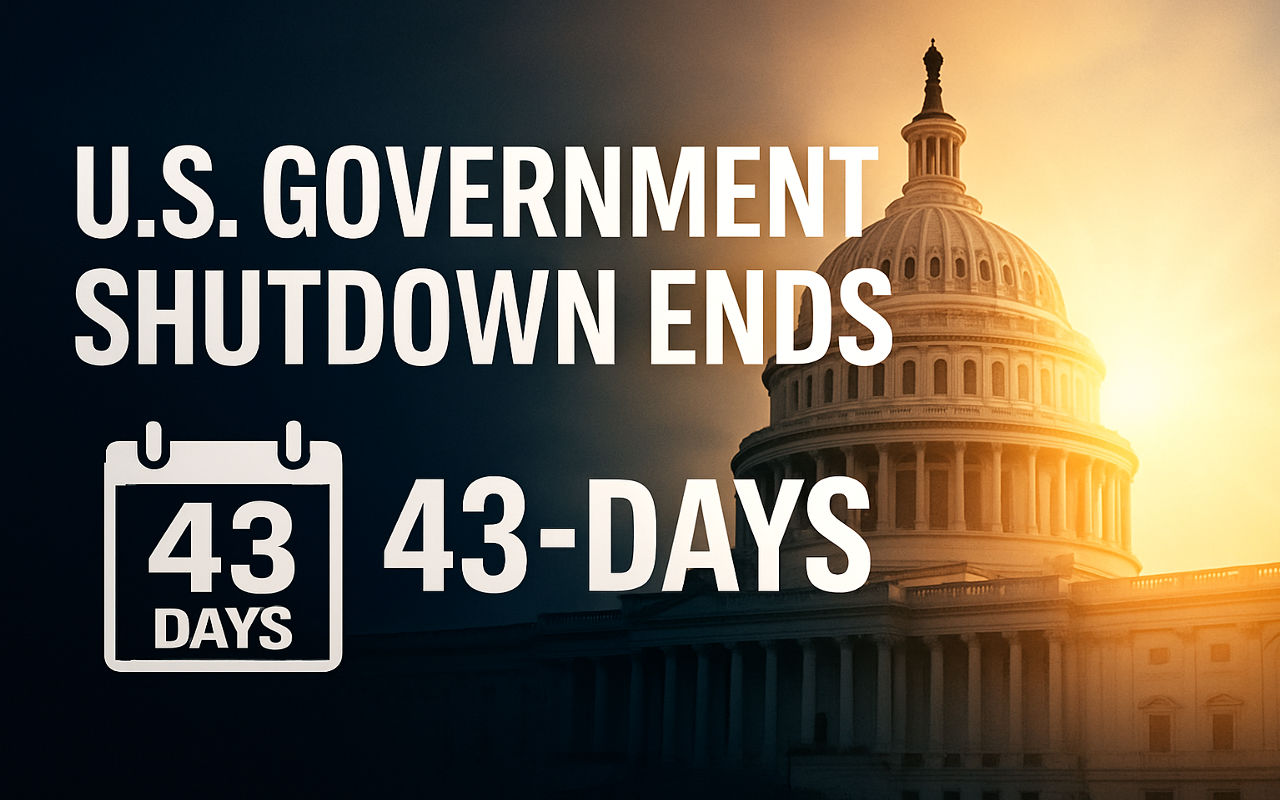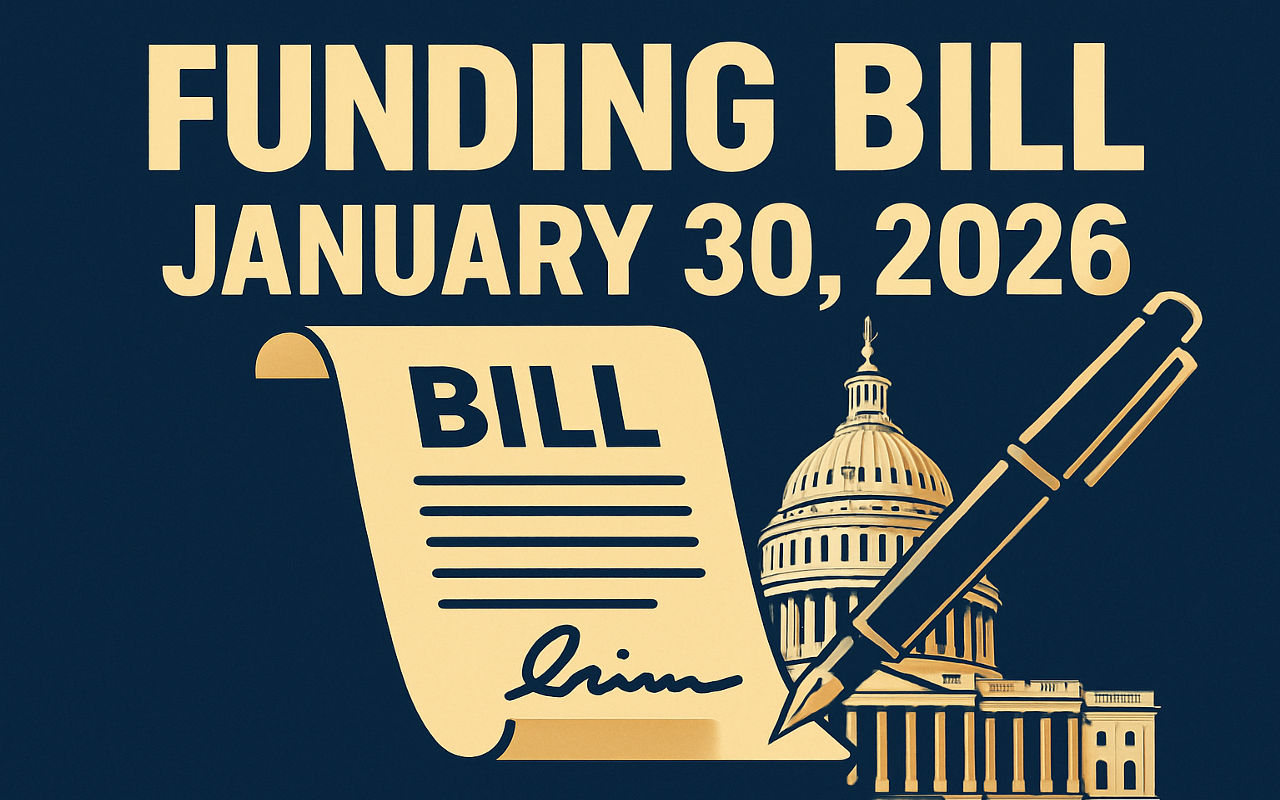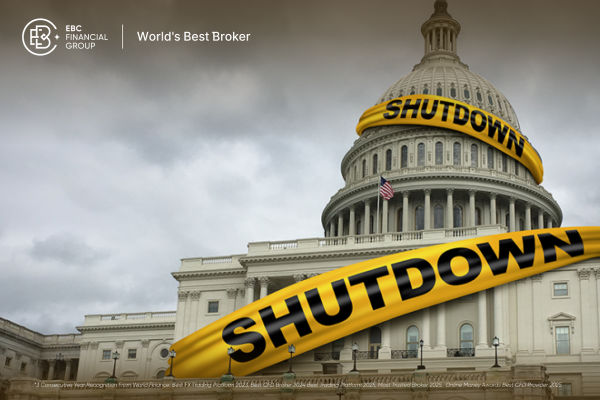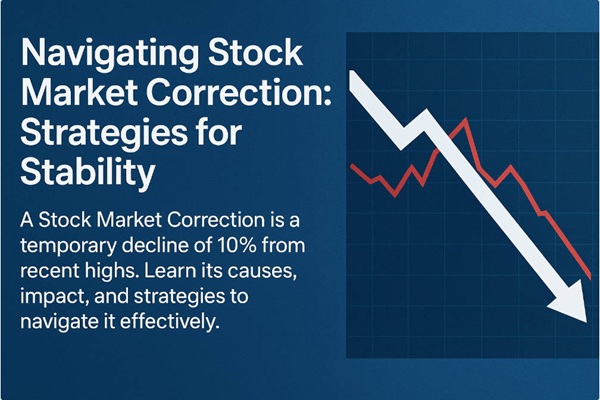The longest federal government shutdown in U.S. history has come to an end. Today, President Trump signed a bipartisan funding bill that will reopen the government after 43 days of shutdown, bringing relief to workers, markets and the broader economy.
Why the Shutdown Ended and Why It Took 43 Days?

The shutdown began on October 1 2025, after Congress failed to pass full-year appropriations for the fiscal year. With no continuing resolution in place, federal operations remained unfunded.
After weeks of delay, the Senate passed a deal on November 10 by a 60-40 vote, and the House followed on November 12 with a 222-209 vote.
Soon after, President Trump signed the funding bill, officially ending the shutdown. The stop-gap spending measure funds most federal operations through January 30, 2026, with a few full-year appropriations included.
Why Did It Drag On for 43 Days?
| Metric |
Detail |
| Shutdown Duration |
43 days (Oct 1 – Nov 12 2025) |
| Senate Vote |
60-40 |
| House Vote |
222-209 |
| Estimated Economic Cost |
$7 – 14 billion (CBO) |
| Funding Expiry |
Jan 30 2026 |
Key conflicts included:
A standoff over healthcare subsidies under the Affordable Care Act (ACA) as Democrats demanded extensions while Republicans resisted.
Disrupting federal operations, delaying key economic data releases such as inflation and employment figures, and also impacting essential services ranging from travel to food assistance.
What This Means for the Economy, Markets & Investors
Relief for Operations and Data Flows
With the funding restored, thousands of federal employees will receive back pay, services will resume, and critical economic data can begin flowing again.
Our earlier article noted that the October inflation and jobs reports may never be released due to the data-collection gap.
For markets, having a clearer fiscal path reduces a major overhang of uncertainty.
Implications for Monetary Policy
The shutdown slowed or suspended key economic statistics, including the Consumer Price Index (CPI) for October. Without those key gauges, the Federal Reserve has been navigating in low-visibility conditions.
For investors, that means:
Rate-cut expectations may shift with less clarity on inflation and employment, and the Fed may adopt a slower approach.
The U.S. dollar and Treasury yields may become more sensitive as markets respond to renewed fiscal clarity following the resolution of the government shutdown.
Sectors tied to government spending (travel, federal contractors, SNAP/food-aid dependent industries) may see relief rallies.
Fiscal Risks Remain
Although the government shutdown has ended, fundamental disagreements persist. Key issues such as the Affordable Care Act subsidy dispute, full-year appropriations, and broader fiscal policy debates remain unresolved.
The recent deal merely provides temporary relief. From a portfolio advisor's perspective, while reopening the government is a positive development, it does not eliminate the ongoing fiscal challenges.
What to Watch Going Forward

1. Future Budget Logic:
With funding through January 30 only, the next funding cliff will come quickly. Watch how Congress handles the next round of appropriations.
2. Full-Year Appropriations & Healthcare Subsidy Vote:
A December vote on ACA subsidies remains on the agenda; its outcome could trigger renewed market risk.
3. Resumption of Federal Data Releases:
Once delayed, reports such as CPI and employment will come back into play, shaping investment decisions and policy.
4. Operational Recovery in Impacted Sectors:
Travel/hospitality (built-up backlog), contractor services, food assistance/distribution, and state budgets will shift from crisis to recovery phases.
5. Market Reaction in Bonds, Currency and Equities:
With fiscal clarity returning, inflation and rate expectations may reset, influencing asset allocations.
Conclusion
In conclusion, the reopening of the U.S. government after 43 days is a significant relief for federal workers, consumers, markets and policymakers alike.
However, while the staffing-back-in and data-flow restoration mark the end of one risk phase, they usher in a new period of policy recalibration.
Thus, treat this moment as a transition and not a destination:
The overhang has been removed, yes, but the journey ahead still requires vigilance.
Use this time to reassess your exposures, ensure your investment strategy aligns with your time horizon, and maintain flexibility amid an evolving fiscal environment.
Frequently Asked Questions
Q1: How Long Did the Federal Government Shutdown Last?
Officially 43 days, making it the longest in U.S. history.
Q2: What Triggered the End of the Shutdown?
A spending bill was passed by both the Senate and the House and was signed into law by President Donald Trump on November 12, 2025.
Q3: What Is the Immediate Funding Timeline Under the New Bill?
The legislation funds most of the government through January 30, 2026. Some departments (Agriculture, Military Construction & Veterans Affairs) received full‐year funding in the deal.
Q4: What Are the Economic Costs of the Shutdown?
Estimates from the Congressional Budget Office (CBO) place potential economic losses due to the shutdown between $7 billion and $14 billion, depending on its duration.
Q5: Will the Missing October Economic Data Be Released Now?
It's uncertain as data collection gaps caused by the shutdown mean it may take several weeks before comprehensive reports become available.
Disclaimer: This material is for general information purposes only and is not intended as (and should not be considered to be) financial, investment or other advice on which reliance should be placed. No opinion given in the material constitutes a recommendation by EBC or the author that any particular investment, security, transaction or investment strategy is suitable for any specific person.























